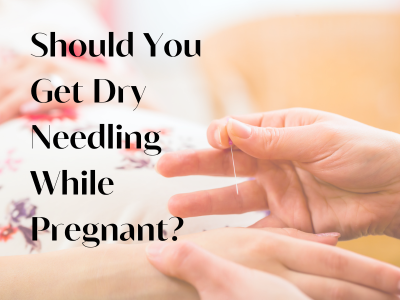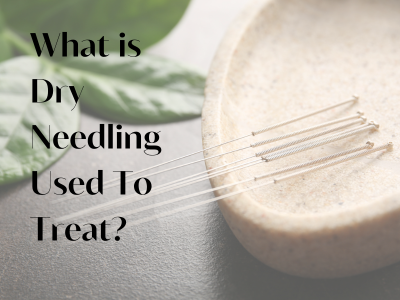What To Expect After Dry Needling
Dry Needling After Care
Dry needling has a plethora of benefits including pain relief, increased range of motion, reduced inflammation and enhanced healing. After a dry needling appointment it is important to know the dos and don’t of what actions to take to help heal your body. From resting to staying hydrated this article will dive into everything you will need to know about what to do after a dry needling session.
How Long Should You Rest After Dry Needling
Dry needling is a rigorous therapeutic technique that demands precision and expertise from trained physical therapists. The insertion of thin needles into targeted trigger points and tight muscle bands requires a thorough understanding of anatomy and neurophysiology. While the intensity of the technique may vary based on the individual’s response and the nature of the condition being treated, it is generally recommended that patients allow an appropriate amount of time between sessions for optimal recovery. Any soreness should not last over 12 hours and if it lasts longer reach out to your therapist. The duration of rest between dry needling sessions typically ranges from a few days to a week, allowing the body to respond to the treatment and minimizing the risk of overstimulation. This cautious approach ensures that the benefits of dry needling can be maximized while prioritizing the patient’s well-being throughout the therapeutic process.
What Not To Do After Dry Needling
After undergoing dry needling, patients should be mindful of certain activities to optimize the effectiveness of the treatment and minimize potential side effects. It is advisable to avoid intense physical activities or strenuous exercise 24 to 48 hours after a dry needling session. While mild soreness or discomfort is normal, pushing the body excessively can exacerbate these sensations and compromise the therapeutic benefits. Similarly, refraining from direct heat application or hot baths for a short period after dry needling is recommended, as the body needs time to naturally respond to the treatment without external influences. Patients are also advised against consuming excessive amounts of alcohol, as it may interfere with the body’s ability to recover. Communication with the physical therapist is crucial; any concerns or unexpected reactions should be promptly discussed to ensure that the post-dry needling period is managed appropriately, promoting a safe and effective recovery.
Recovery Time For Dry Needling
Recovery after dry needling varies based on individual factors such as overall health, the specific condition treated, and personal responses. Immediate relief is common, with some individuals experiencing temporary soreness or heightened symptoms before improvement. Mild discomfort typically subsides within a day or two, while the full benefits may take time to emerge. To optimize recovery, physical therapists often recommend spacing out dry needling sessions, usually with rest periods ranging from a few days to a week. Engaging in gentle activities and following post-treatment instructions provided by the therapist can aid in the healing process.
Pain Medication After Dry Needling
After undergoing dry needling, whether to take pain medications largely depends on individual tolerance and the level of discomfort experienced post-treatment. It’s common for some patients to encounter mild soreness or temporary exacerbation of symptoms, and in such cases, over-the-counter pain relievers like acetaminophen or nonsteroidal anti-inflammatory drugs (NSAIDs) such as ibuprofen may be considered. However, it’s crucial to consult with the treating physical therapist or healthcare professional before taking any medications. Some therapists may recommend avoiding NSAIDs initially, as they can potentially interfere with the natural inflammatory response that contributes to the therapeutic effects of dry needling. Additionally, individual health conditions and potential interactions with other medications should be considered. Open communication with the healthcare provider ensures that any pain management approach aligns with the specific needs and circumstances of the patient, contributing to a well-informed and tailored recovery plan.
Results After Dry Needling
The timeline for observing results after dry needling can vary widely and is influenced by factors such as the nature and severity of the condition being treated, individual responsiveness, and the overall treatment plan. Some individuals may experience immediate relief or improvements in symptoms right after a dry needling session, while others might notice gradual changes over the course of several days. It’s not uncommon for a temporary increase in symptoms, known as post-treatment soreness, before experiencing sustained relief. The full benefits of dry needling often become more apparent with ongoing sessions and consistent adherence to any prescribed exercises or self-care recommendations. Patients are encouraged to communicate openly with their physical therapist to discuss progress, manage expectations, and make any necessary adjustments to the treatment plan based on individual responses.
Dry Needling Tips for After Care
After undergoing dry needling, it is crucial to prioritize self-care to optimize the benefits of the treatment and promote overall well-being. First and foremost, it is essential to stay adequately hydrated to help flush out any toxins released during the therapy. Applying ice to the treated areas can help alleviate any post-needling soreness and reduce inflammation. Gentle stretching and light exercises may be recommended to enhance flexibility and prevent muscle stiffness. Adequate rest is also crucial to allow the body to recover and heal. It is advisable to communicate any concerns or sensations experienced post-dry needling with your healthcare provider, ensuring a collaborative approach to your ongoing care. Additionally, maintaining a healthy lifestyle, including regular exercise, proper nutrition, and stress management, can contribute to sustained well-being and support the effectiveness of dry needling in the long run.
Drink Plenty of Water
After a dry needling session, it is recommended to increase your water intake. Consuming an adequate amount of water helps flush out metabolic waste products released during the treatment, promoting efficient healing and reducing post-needling soreness. Aim to drink at least 8 to 10 glasses (64-80 ounces) of water throughout the day to support the body’s natural detoxification processes and optimize the therapeutic benefits of dry needling.
Avoid Mild to Moderate Heat On Affected Area
Following a dry needling session, it is advisable to avoid the application of heat to the treated areas. Heat can exacerbate inflammation and potentially intensify post-needling soreness. The needling process may induce microtrauma to the muscles, and applying heat can increase blood flow, leading to more swelling and discomfort. Instead, opting for cold therapy, such as ice packs, can help reduce inflammation and provide relief.
Drinks
After dry needling, it is advisable to avoid alcoholic and caffeinated beverages for at least 24 hours. Alcohol and caffeine can potentially contribute to dehydration and may interfere with the body’s natural healing processes. Both substances can have diuretic effects, leading to increased urine production and fluid loss, which may hinder the elimination of metabolic waste products released during the needling session. Opting for water or hydrating, non-caffeinated drinks during this period can support the body’s recovery and help minimize any potential side effects.


